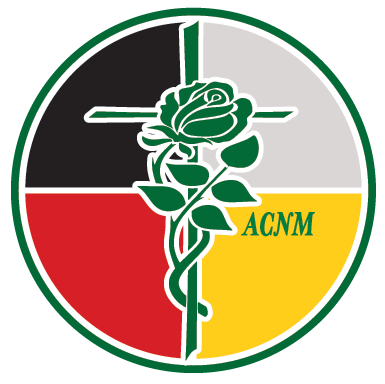Raw Food Risks and Solutions!
By Dr. Anthony B. James

Virtually every class we hold at ACNM (American College of Natural Medicine) has one or more “Raw Foodists,” which appears to be a growing trend. However, in conversation with them, there seems to be a lack of knowledge and uninformed prejudice regarding the risks of eating an exclusively raw food diet and the necessity and benefit of cooking and/or processing some foods.
At the ACNM and the Thai Yoga Center, we teach nutrition and healthy eating based on traditional principles. We stress the value of a predominantly plant-based diet in the most unadulterated state possible to support safe and dense nutrition.
As SomaVeda® Thai Yoga practitioners, nutrition advocacy is one of our most potent and reliable adjuncts. However, there is no scientific or traditional support for the idea that eating raw food exclusively is healthy. Our ancient Native American culture consumed a varied and primarily plant-based diet consisting of both raw and cooked foods. Yet, there are definite and very clear health risks associated with the consumption of some raw foods.
Fact sheet No. 9.369, published by the Colorado State University Extension sites research, specifically addresses the prevalence and risk of E. coli in raw vegetables. “Fresh fruits and vegetables once were thought to be relatively free of disease-producing pathogens. In recent years, however, outbreaks of foodborne illness linked to fruits and vegetables have become more common.
These outbreaks come from produce grown both in the United States and in other countries. Outbreaks have been linked to Escherichia coli O157:H7 and Salmonella on apples, lettuce, cantaloupe, and sprouts; Listeria monocytogenes on cabbage and cantaloupe; Shigella on parsley and lettuce; and Cyclospora on imported raspberries.”
“Root crops and leafy vegetables have the greatest risk of infection from manure application to soil. They can also become contaminated through direct or indirect contact with cattle, deer, and sheep. E. coli O157:H7 is most prevalent in ruminants in general and in cattle in particular (both beef and dairy). Other known carriers include birds, insects, and squirrels.
While the bacteria do not appear to make these animals sick, the animals carry and shed the bacteria in their feces. Drinking and recreational water have been carriers in several outbreaks, most likely from fecal contamination by infected animals or people.”
The truth is, we have no way to verify from garden to table that there has been no vector of contamination somewhere along the line.
These bacterial and fungal contaminants can produce life-threatening illnesses, especially in persons with a slow or challenged immune system. For specific details, read the full report at (http://www.ext.colostate.edu/pubs/foodnut/09369.html)
What about my favorite Super Raw Foods, such as Raw Cacao?
I love chocolate as much as the next person. I helped build a Cacao farm in Ecuador a few years ago (see photo) and was convinced of the benefits of raw chocolate.
However, recent studies and revelations have come to mind to discourage me from anything other than the occasional use of raw, uncooked chocolate. Sad, I know, but I want to be healthy, and I want my clients to be healthy. The main issue with unprocessed or raw chocolate is pathogenic Mycotoxins such as Aflatoxin and Ochratoxin A, which can cause the following effects: Neurotoxic (destroys nervous tissue), Immunosuppressive (suppresses immune function), Genotoxic (causes genetic mutations), Carcinogenic (cancer-causing), and Teratogenic (causes birth defects).

One study makes the following points:
- “The occurrence of aflatoxins and ochratoxin A in chocolate was investigated.”
- “Ochratoxin A was present in 98% of the evaluated chocolate samples.”
- “Aflatoxins co-occurred in 80% of the samples contaminated with ochratoxin A.”
- “The tendency of higher amounts of mycotoxins is higher with the cocoa solids content.”
(http://www.sciencedirect.com/science/article/pii/S0956713511005640)
This strongly suggests that safer chocolate is roasted chocolate!
What does the CDC say about Foodborne Illness?
Quite a lot!
“We estimate that foodborne diseases cause approximately 76 million illnesses, 325,000 hospitalizations, and 5,000 deaths in the United States each year.” (Mead PS, Slutsker L, Dietz V, McCaig LF, Bresee JS, Shapiro C, et al. Food-Related Illness and Death in the United States. Emerg Infect Dis [serial on the Internet]. 1999, Oct [date cited]. Available from http://wwwnc.cdc.gov/eid/article/5/5/99-0502.htm)
According to CDC (Centers for Disease Control) references, to have a safer food experience:
CLEANhttp://www.cdc.gov/Other/disclaimer.html: Wash produce.
- Rinse fresh fruits and vegetables in running tap water to remove visible dirt and grime.
- Remove and discard the outermost leaves of a head of lettuce or cabbage.
- Because bacteria can grow well on the cut surface of fruit or vegetables, be careful not to contaminate these foods while slicing them up on the cutting board, and avoid leaving cut produce at room temperature for many hours.
- Don’t be a source of foodborne illness yourself.
- Wash your hands with soap and water before preparing food.
- Avoid preparing food for others if you yourself have a diarrheal illness.
- Changing a baby’s diaper while preparing food is a bad idea that can easily spread illness.
(http://www.cdc.gov/foodsafety/facts.html – whatprotect)
Of course, I would also recommend avoiding consuming any foods that are inherently risky or likely candidates for contamination.
No food is automatically and exclusively safe from contamination!
According to The Partnership for Food Safety Education (http://www.fightbac.org/), “Despite progress improving the quality and safety of foods, the CAST report explains, ‘any raw agricultural product can be contaminated. Bacteria may survive despite aggressive controls at the processing level, or the food may become contaminated somewhere along the way during transport, preparation, cooking, serving, and storage.” (http://www.fightbac.org/about-foodborne-illness/challenges)
It concerns the growing risk of Microbial and Mycological hazards. They cite the nonprofit Council for Agricultural Science and Technology (CAST), which has reported that zero risk of microbiological hazards is not possible and that no method will eliminate all pathogens or toxins from the food chain (“Food Safety and Fresh Produce: An Update”, 2009).
What can I do to have a safer experience consuming vegetables and raw foods?
There are a few opinions, but there is also a generally accepted standard for the safety of your veggies. The recommendations stated in the above-referenced reports are:
Food handling and preparation practices are the last defense for preventing infection from E. coli O157:H7 and other foodborne pathogens. The following actions can help ensure the safety of the food you serve. They are especially important if you or those you serve are at risk for foodborne illness. The groups at highest risk include pregnant women and infants, children, the elderly, and immunocompromised individuals.
- Wash hands thoroughly before working with food and after using the toilet, changing diapers, handling animals, or helping people with diarrhea.
- Thoroughly wash raw fruits and vegetables just before preparing or eating them. This not only helps remove dirt, bacteria, and stubborn garden pests, but it also helps remove residual pesticides. Separate and individually rinse the leaves of spinach and lettuce. Peel potatoes, carrots, yams, and other root vegetables, or clean them well with a firm scrub brush under lukewarm running water. Pat dry with paper towels.
- Clean and sanitize cutting boards, utensils, and surface areas used to prepare any raw food before using them to prepare another product, especially if that food will be eaten raw. Use 3/4 teaspoon of chlorine bleach per quart.
- Avoid cross-contamination between raw and cooked foods. Store fresh meat below produce in the refrigerator. Never place cooked meat on an unwashed plate that holds raw meat.
- Cook ground meats thoroughly to 160 degrees F. Check the internal temperature with a thermometer.
- Don’t drink raw milk. Also, avoid unpasteurized juices or ciders.
- Use only safe, treated water.
- Refrigerate leftovers promptly.
Rinsing some produce, such as leafy greens, with a vinegar solution (1/2 cup distilled white vinegar per 2 cups water) followed by a clean water rinse has been shown to reduce bacterial contamination but may affect the taste.
Although bleach is recommended as a cleaning and disinfecting agent, I disagree with its use! Instead of chlorine bleach, which is disastrous for the environment and life on earth, I recommend using one or more of the following: Oxygenated Water, Colloidal Silver, or Vinegar. They are safe and do not cause contamination themselves!
I also don’t agree with the prohibition of Raw Milk and Dairy, provided that the origin is safe and reliable. Raw milk has been proven to have many health benefits over its pasteurized cousin. (http://www.realmilk.com/health/health-benefits-of-raw-milk-from-grass-fed-animals/)
Closing ideas on Raw Food Risks and Solutions!:
Be informed about your food choices and research what you eat! No foods are inherently risk-free, including water. The best way to guarantee the quality of your food is to grow your own or cooperate with someone who does. Buy or use the freshest, cleanest, organic, local foods. Keep yourself and your preparation practices clean.
Always properly handle and clean your veggies or other foods, and avoid cross-contamination issues. Rotate your diet to avoid toxic saturation, including allergens. Avoid eating Raw Chocolate in amounts other than small ones and on rare occasions!
Where can I learn more about SomaVeda Integrative Traditional Therapies®, including Thai Yoga training, certificates, and college degree programs?
American College of Natural Medicine

Gain a College Degree in Traditional and Natural-Based Medicine and Therapeutics. ACNM offers two—to four-year College Degrees: AA, BSc, DSNM/ ND, PhD Ayurveda Medicine, or the Doctor of Sacred Traditional and Indigenous Medicine (DSTIM), entirely based in Natural Medicine.
Gain professionally recognized training, certification, and a college degree as a Holistic Services, Natural Health, or Natural Medicine Provider. Want to learn the ins and outs of natural remedies for infections and a host of other conditions? Consider joining the American College of Natural Medicine.
For more information on educational materials by this author, see the Yoga Therapy bookstore at BeardedMedia.Com. If you think your friends would benefit from this information, please have them subscribe to our newsletter!
Disclaimer: All Information is provided for educational purposes only and is not intended to be used for any therapeutic purpose, nor is it intended to diagnose, prevent, treat, or cure any disease. Please consult a health care professional for diagnosis and treatment of medical conditions. At the same time, all attempts have been made to ensure the accuracy of this information. The author and ThaiYogaCenter.Com does not accept any responsibility for any errors or omissions.
Additional References for Dangers of Raw Food Diet
- Dr. Berg: Raw Food vs. Cooked Foods and Enzymes (https://www.drberg.com/blog/raw-vs-cooked-foods-and-enzymes)
- Dangers of Raw Food Diet (https://www.livestrong.com/article/347498-dangers-of-a-raw-food-diet/)
- Raw Food Diet: Is It Healthier (https://health.clevelandclinic.org/raw-food-diet-is-it-healthier)
- Raw Food Diet: Benefits, Risks and How to Follow (https://draxe.com/nutrition/raw-food-diet/)
Copyright© 2024, Anthony B. James
All rights reserved under International and Pan-American copyright conventions. World rights reserved. No part of this book may be reproduced or utilized in any form or by any means, electronic or mechanical, including photocopying and recording, or by any information storage and retrieval system, without permission in writing from the publisher. Inquiries should be addressed to Dr. Anthony B. James, 8491 Central Ave. Brooksville, FL 34613
Tel: (706) 358-8646 (Cell) · www.ThaiYogaCenter.Com
